MULHOUSE – AT THE CROSSROADS OF THREE COUNTRIES
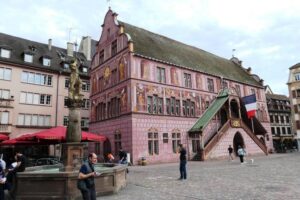
The city of Mulhouse is located in the far south of the Alsace region, on the Ill river and a canal of the river Rhine, between the Vosges and Jura mountains, at the crossroads of three countries: France, Switzerland and Germany. Its location is reflected in the city’s rich cultural mix, language and cuisine. It became one of the most important industrial centres in the country, firstly for the textile industry and later for chemicals, engineering and vehicle manufacturing. Although these activities suggest a less-than-attractive destination, it is a surprisingly inviting city, with a rich heritage of historic buildings, attractive squares and pedestrianised streets. As well, Mulhouse is known for its museums, including one housing the world’s biggest car collection.
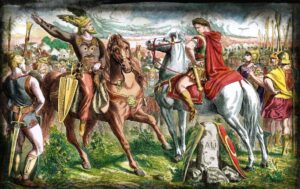
Mulhouse is known to have existed since pre-Roman times, and in 58 BCE, a battle took place to the west of today’s town between a coalition of Germanic people led by Ariovistus, against the invading Roman army under Julius Caesar.
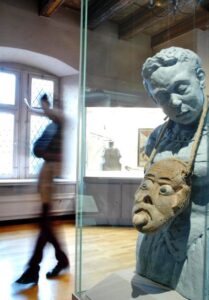
However, there is a delightful legend about the origins of the town, which says that Mulhouse was founded when the army of Attila the Hun was ravaging the region in 451 CE. A young, wounded warrior attempted to flee the fighting and found refuge near a mill house. The daughter of the miller saw him and took care of him. Later, the warrior married her, and they were joined by other wandering soldiers, who married other young women of the region. They set up their homes around the mill house and founded ‘Mulhouse’. This legend explains why the city’s coat of arms features a watermill wheel.
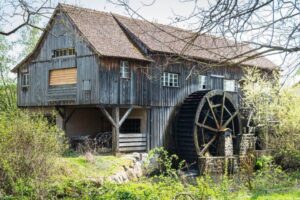
Mention of Mulhouse was made in the 9th century, and there is a record of the town dating from the 12th century. It was part of the southern Alsatian county of Sundgau in the Holy Roman Empire, and from 1354 to 1515, it was part of the Zehnstädtebund, an association of ten Free Imperial Cities in Alsace.
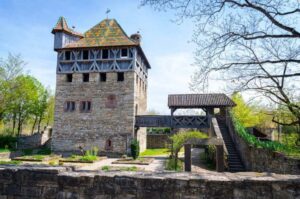
The city joined the Swiss Confederation as an associate in 1515, and therefore, unlike the rest of the Sundgau, was not annexed by France in the Peace of Westphalia in 1648. An enclave of Alsace, it was a free and independent Calvinist republic, associated with the Swiss Confederation until after a vote by its citizens on 04 January 1798, when it became a part of France in the Treaty of Mulhouse, during the Directoire period of the French Revolution.

During the middle of the 18th century, the Koechlin family pioneered the manufacture of cotton cloth and printing on fabric. By the end of the 18th century, no less than 15 textile factories operated in Mulhouse. The city became one of France’s leading textile centres during the 19th century. Quick to appreciate the potential of the new railways being built across the country and beyond, and particularly the lines from Strasbourg to Lyon and Basel and up to Paris, André Koechlin built machinery and started making railroad equipment in 1842. The company was one of six large French locomotive constructors until it merged with another company in 1872 to become the Sociétè Alsacienne de Constructions Mécaniques.
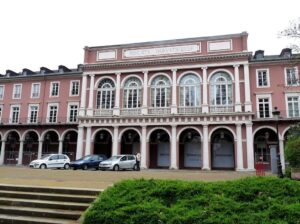
Industrialists, mostly Protestant, became so rich and influential that they began to monopolise political power. In 1826, the Société Industrielle de Mulhouse was founded by Protestant industrialists, including Joseph Koechlin. Acting as a kind of laboratory of economic, technical and social initiatives, the Societe is still active today, and based on Place de la Bourse.
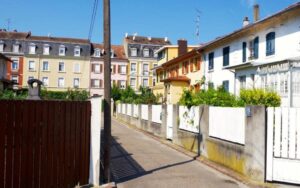
Refusing to ignore the miserable conditions of the workers, the Mulhouse manufacturers developed plans to make things better. They commissioned a workers’ housing development plan that served as a model for garden cities in Europe, and in 1852, two prototypes of workers’ houses were built in Mulhouse. Over a thousand of these houses were built in the following years, where each family had its private door and a garden.
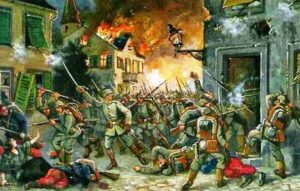
After the Prussian victory in the Franco-Prussian War (1870-71), Mulhouse was annexed to the German Empire as part of the territory of Alsace-Lorraine (1871 – 1918). It was briefly occupied by French troops in August 1914, but they were forced to withdraw after only two days during the Battle of Mulhouse. It was occupied a couple of times over the following few weeks, and those Alsatians who celebrated the appearance of the French army suffered severe reprisals by the Germans, and many were shot. Alsace was finally ceded to France under the Treaty of Versailles at the conclusion of WW1, but after the Battle of France in 1940, Mulhouse was again occupied by German forces until its return to France in May 1945, at the end of WW2.

The town’s development was due initially to the expansion of the textile industry and tanning, and subsequently by chemical and other engineering industries from the mid-18th century. For a long time, Mulhouse was called the French Manchester. Consequently, the city has enduring links with Louisiana in the USA, from which it imported cotton, and also with parts of the Middle East and Eastern Mediterranean.
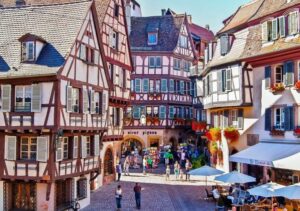
In acknowledgement of its unique location at the crossroads of three countries, its centuries-old industries, distinctive historic buildings and broad cultural attributes, saw Mulhouse awarded the label “Ville d’Art et d’Histoire (City of Art and History), a label of excellence for its unique heritage, in 2008. Being the first city in the Alsace region of France to obtain this award, Mulhouse became one of the most popular heritage destinations in the country.
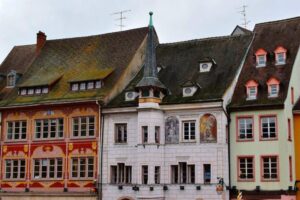
A stroll around Mulhouse will reveal the charms of its neighbourhoods: 14th century stained-glass windows, Rhenish-renaissance style frescoed façades, mansions, many renovated and restored brick buildings, impressive churches, parks and gardens, unique museums and numerous enticing boutiques that follow the fashions of nearby Germany and Switzerland as well as those in France.
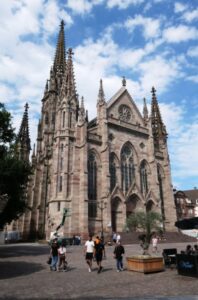
The main square, Place de la Reunion, is the beating heart of the city and lined in the most important historic buildings. Saint Etienne Cathedral overlooks the Place, and is an admirable example of neo-Gothic architecture. It is the tallest Protestant church in France and is dedicated to Saint Stephen. Its tall, slender, 97m high bell tower is the highest steeple in the Haut-Rhin region. During the Christmas Markets, the façade serves as a magical canvas on which wonderful, colourful textile backgrounds are projected, the patterns of which change every year.
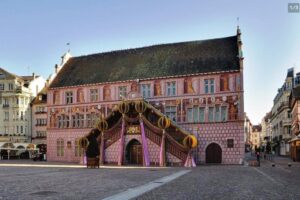
At the side of the cathedral is the Hotel de Ville, immediately recognisable by its rose-coloured façade. Built in the Renaissance style in the 16th century, and restored several times down the centuries, it features a double staircase and splendid frescoes.
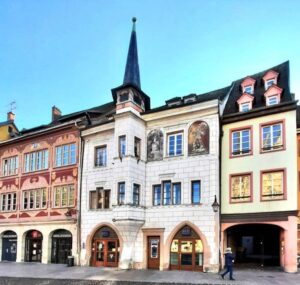
Also notable is the largest palace on the square, the Maison Mieg, notable for its delightful turret and beautiful trompe l’oeil features that enchant visitors. The Pharmacie au Lys, overlooking the square, is one of the oldest pharmacies in Europe, still in business since 1649. Its interior has its original furniture from the time of Charles X, perfectly preserved.
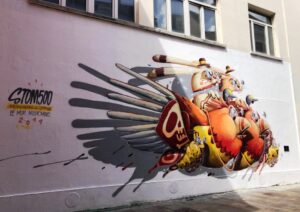
Art is very much at home in Mulhouse. There are not only numerous museums, but temporary installations, sculptures, and many examples of street art that enliven the city streets. Check out Quai des Pêcheurs, which runs along the bike path: the walls are completely occupied by the spectacular creations of different artists who come together to highlight the diversity and quality of street art. There’s an enormous trompe-l’oeil at Place Lucien Dreyfus, in the pedestrian area near the Cour des Maréchaux, and in the area of Les Halles du Marche du Canal Couvert, Mulhouse’s covered market, at 20 Bvd. du Président Roosevelt, there is an immense mural called ‘The Sower’.
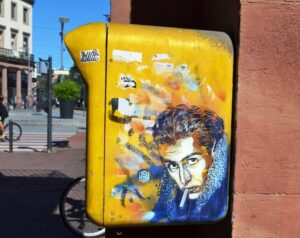
Visually, probably the most fun to be had in the city is that of the painted postboxes: Christian Guemy, aka C215, has painted no less than 21 yellow letterboxes (in collaboration with the French postal service), with unusual character depictions. It becomes a kind of treasure hunt that will enable you to discover the most beautiful and unusual corners of the city.
One of the richest and most important museums in Mulhouse is undoubtedly the Automobile Museum on rue de la Mertzau. This museum boasts the Schlumpf Collection, the largest private collection of automobiles in the world, including the world’s biggest collection of Bugattis. In an area of around 25,000 m2, you will find more than 400 vintage cars of about 97 different makes, such as Rolls-Royce, Mercedes, Peugeot, De Dion, to name just a few.
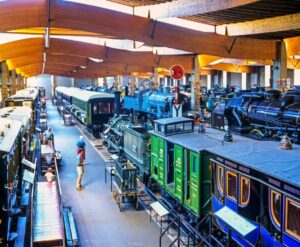
On rue Alfred de Glehn, the Cité du Train (Train Museum) is considered the largest museum dedicated to the world of railways in Europe, and among the 10 largest in the world. Covering an area of 60,000 m2, it brings together antique and modern pieces from 1827 to the present day, ranging from rolling stock and objects from train history, divided into six themes.
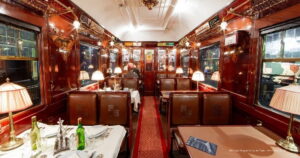
You can experience an incredible journey back in time, thanks to the magnificent layouts, the exquisitely furnished wagons inhabited by characters in costume, according to the fashions of the time, and the skilful sets installed along the way.
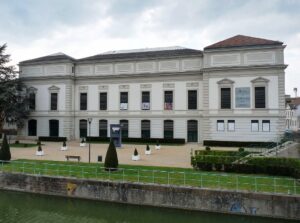
If you’re interested in textiles and the history of fabrics in Mulhouse, head to the Musée de l’Impression sur Étoffes (MISE) in rue Jean-Jacques Henner. This museum is dedicated to the history and techniques of textile printing, one of the area’s historic skills. There are beautiful fabrics on display, with explanations on the techniques of printing on fabrics, including an excellent film on the subject on the 1st floor.
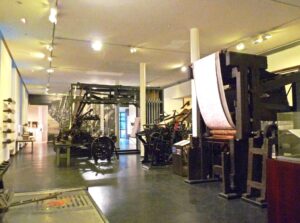
The museum dates back to 1833, when the industrialists of Mulhouse decided to preserve their textile creations and enrich the collection of pieces from all over the world. The aim was to stimulate textile designers by offering them a source of inspiration and a learning tool. The collection, which has grown considerably over the years, has become a resource centre for the textile industry.
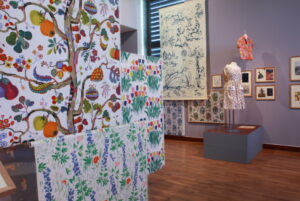
There are now over 6 million samples, including many rare textiles, and a variety of textiles such as ikats and batiks. The museum also offers creative workshops and demonstrations of printing techniques. The museum shop is well worth a visit, as it’s full of beautiful, locally made items that are absolutely irresistible!
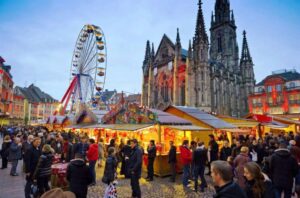
The atmosphere in Mulhouse at Christmas is truly authentic, unique and utterly magical. The city centre becomes one big light show—in fact, in honour its long history as the capital of textiles, every year the city’s main square, Place Reunion, is entirely “dressed” in a different fabric, projected onto all the facades of the historic buildings. An incredible and different scenario every year.
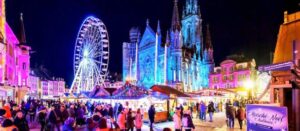
Marked by its history, Mulhouse makes the most of its advantages and differences. It is a most interesting city to visit, and a great introduction to the Alsace region, especially if you’re starting from the south and heading north towards Strasbourg.
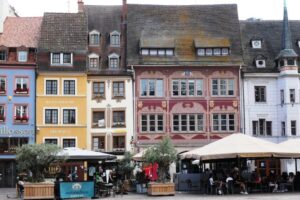
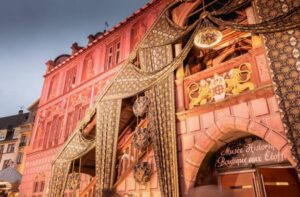


Hi Cheryl, Mulhouse looks gorgeous. Our late October 2025 river cruise calls into Basel, just 40 minutes by car to Mulhouse. Hopefully we can take a small detour to this French gem.
Hi Bob,
Yes, it was quite a surprise for us. We’d been past the town numerous times when we’d been in the area, but we had been headed for other destinations, so never bothered to stop. So glad we did, as it had so much to offer. Nice to find gems like this unexpectedly.
Cheers, Cheryl